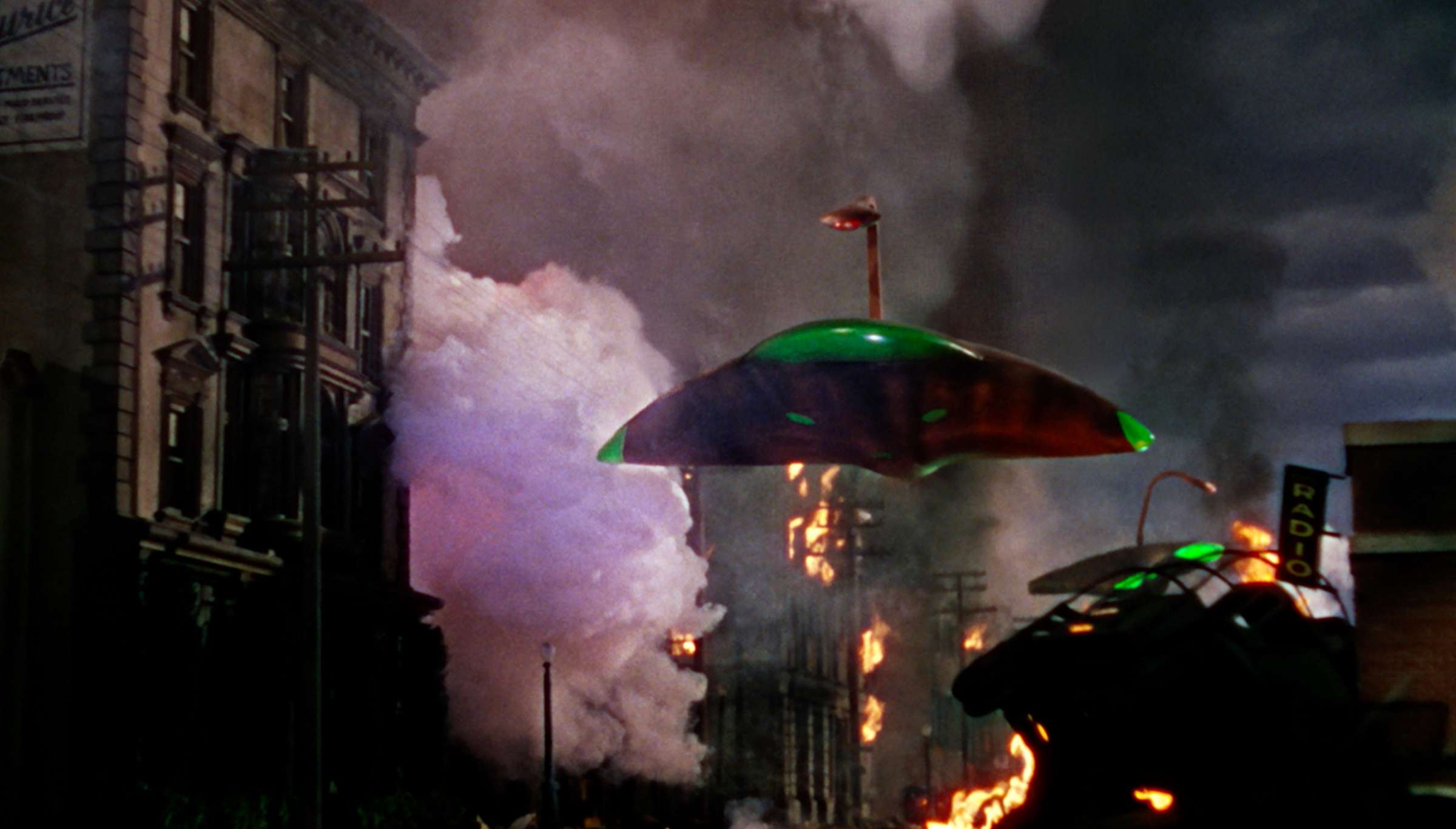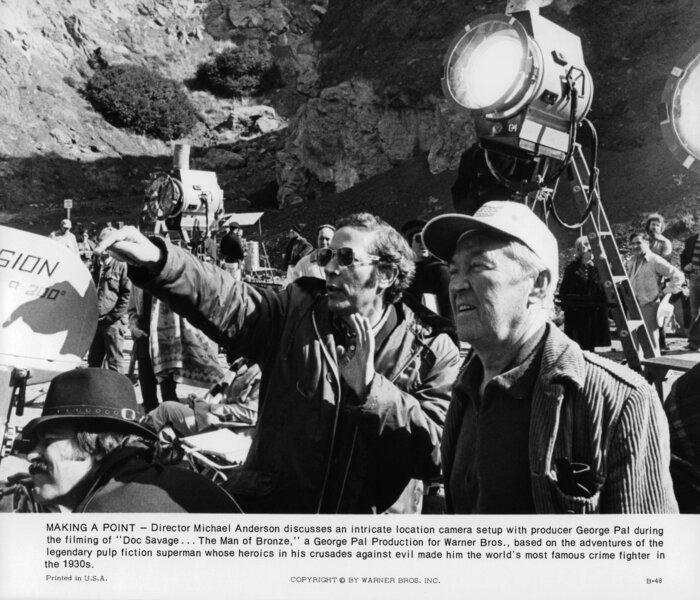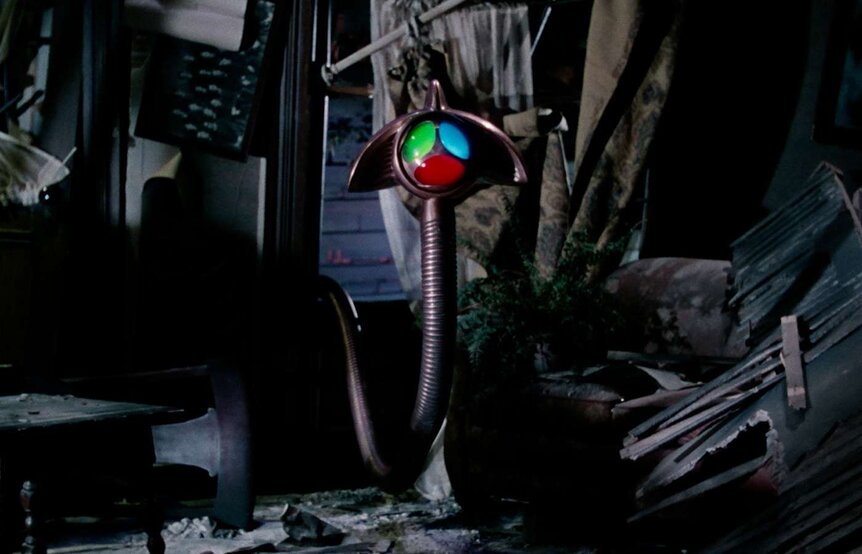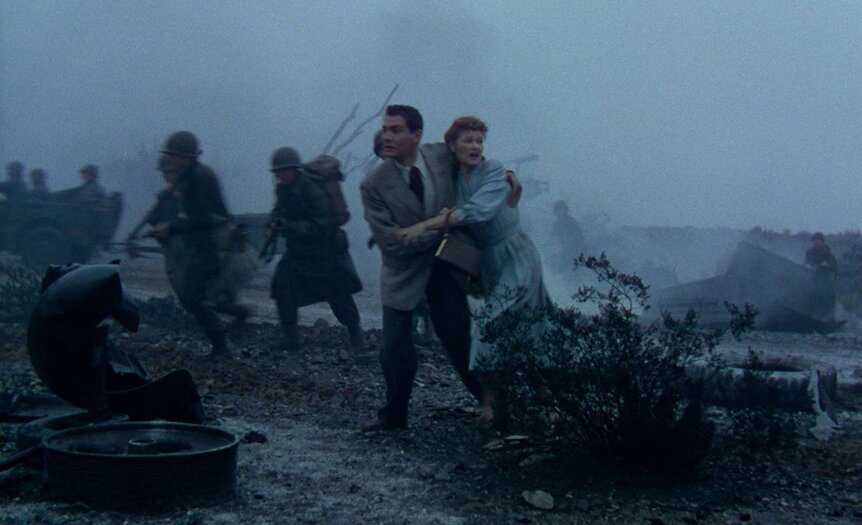Create a free profile to get unlimited access to exclusive videos, sweepstakes, and more!
Why The War of the Worlds producer George Pal was the Spielberg of his time

Last week, the consistently remarkable Criterion Collection brought us the first-ever Blu-ray release of the 1953 sci-fi classic The War of the Worlds. The film, based on the 1898 novel by the great H.G. Wells, has been remade several times since, but this first version set a high standard for the others that came in its wake. While director Byron Haskin did an admirable job bringing the Martian invaders to life, the unsung hero of the film (alongside the common cold, of course) might be producer George Pal ― one of the pioneers of filmed science fiction as we know it.
"George is considered the father of sci-fi films," says Bob Burns in The Sky Is Falling, the making-of documentary included in the Criterion package. "And he pretty much is, because he was the first one to really do sci-fi films that had that name.”
According to an illustrated essay by critic J. Hoberman also included with the Blu-ray, Pal started his career as a designer and animator in the Hungarian film industry. Pal, born György Pál Marczincsak in Hungary in 1908, first worked during the 1930s in Berlin, Prague, Paris, and Holland, where he perfected his style of puppet animation in both shorts and advertisements. Pal was lured to Hollywood in 1939, where he created more than 40 animated shorts for Paramount Pictures, known as "Puppetoons."
His first feature as a producer, The Great Rupert, reportedly featured an animated squirrel so lifelike that some viewers were convinced it was a trained animal. But it was Pal's second film, 1950's Destination Moon (directed by Irving Pichel), that changed the course of his career and possibly that of sci-fi cinema.
Based loosely on a novel by legendary sci-fi author Robert A. Heinlein (who also worked on the screenplay), the film was the first major genre picture produced in the U.S. that addressed the nuts and bolts of space travel in serious fashion.
"If you believe in (your concept), really, you make a better picture," says Pal in an audio recording included on the Blu-ray of a seminar he gave at the American Film Institute (AFI) in 1970. "Because it shows the sincerity. In other words, you don't fluff it up or go, 'Oh, what the hell, the public doesn't know this or that.' That's not so. The audience feels if you're sincere in your effort."
Although it certainly may seem dated and stodgy now — noted critic John Baxter called it "rather dull viewing" just 20 years later in his book Science Fiction in the Cinema — Destination Moon represented an important step forward for filmed science fiction overall.
It was an important step forward for Pal as well, whose next film as producer, When Worlds Collide, came out just a year later. Based on the 1933 novel by Philip Wylie and Edwin Balmer, it revolved around efforts to build a "space ark" on which selected representatives of humanity can escape an oncoming cataclysmic collision between Earth and a "rogue star" called Bellus by landing on Bellus' sole planet, Zyra.
While Destination Moon at least attempted scientific accuracy, Pal threw all that out the window with When Worlds Collide and focused on sheer spectacle. The film, directed by Rudolph Mate, is best remembered for scenes of massive devastation that pre-dated later epics like Independence Day and Deep Impact by decades.
When Worlds Collide cost nearly $1 million to make in 1951 dollars (equivalent to roughly $10 million today ― still a bargain!) and, like Destination Moon, won the Academy Award for Best Special Effects, paving the way for Pal's next and almost certainly greatest sci-fi achievement with The War of the Worlds.
"So many writers and producers tried to make it, but they couldn't lick the script," says Pal in the AFI seminar. "Nobody was thinking of the simplest thing, which is really to follow the book as closely as you possibly can. I came over to Paramount, found it in the files, and thought, 'This is wonderful, War of the Worlds is a great story.'"
The latter in turn hired director Byron Haskin, whose knowledge of special effects, according to John Brosnan in his book Future Tense, made Haskin an "apt choice" to direct a film as complex as The War of the Worlds. Haskin would work with Pal twice more, while also later directing Robinson Crusoe on Mars and several classic episodes of the 1960s TV series The Outer Limits, including the show's masterpiece, "Demon With a Glass Hand."
Even though The War of the Worlds had a relatively robust budget of $2 million, Pal, Haskin, and screenwriter Barre Lyndon made accommodations to keep the movie financially feasible. The first was updating the story from Wells' Victorian England to modern-day Southern California. "With all the talk about flying saucers, War of the Worlds had become especially timely," Pal told Cinefantastique in 1977. "And that was one of the reasons we updated the story."
The second was changing Wells' Martian war machines from walking tripods to vessels shaped like manta rays, with long necks and snake-like heads that blast out the Martian death rays (although the machines are visibly supported by three energy beams that touch the ground below, which still make them tripods in a way).
A third decision was casting the movie with mostly unknowns. Lead scientist Clayton Forrester was played by stage and TV actor Gene Barry in only his second big-screen appearance. "George Pal produced wonderfully strange, different kinds of movies," says Barry in The Sky Is Falling, recalling his appearance in what was then a massive production. "Movies that had physical accomplishments in them that had to be done, and he did them. He made them happen. Magic. He brought a magic to the screen."
Indeed he did. Even for a film made 67 years ago, The War of the Worlds works as an all-out, often terrifying spectacle. Cities are obliterated, the military is vanquished, and the Martian death machines run rampant over the countryside. Just as Wells' book was one of the first to detail a full-scale invasion from another world, Pal and Haskin's film effectively brought home the sheer horror of what that might look like. According to Hoberman, Haskin said, "I wanted to stress the total helplessness of humanity."
The War of the Worlds established Pal as one of the great showmen of his era and a major filmmaker in the realm of science fiction. The movie, the third Pal film to win an Oscar for Best Special Effects, reflected the atomic fears of the Cold War era — and mostly holds up. There probably hasn't been an alien invasion film since that doesn't owe something to this genuinely harrowing classic, from Independence Day to Edge of Tomorrow to Steven Spielberg's own, even darker version of the same story in 2005.
Pal would continue to make sci-fi and fantasy films after The War of the Worlds, although his 1955 follow-up to Destination Moon, The Conquest of Space, was a pricey flop. He also began to direct pictures himself, starting with 1958's musical fantasy, Tom Thumb, and in 1960 returned to H.G. Wells for what might be considered his second great film, The Time Machine.
"H.G. Wells' ideas were always very, very good for motion pictures," recalled Pal, who said he got the rights to The Time Machine after the Wells estate saw The War of the Worlds and approved of it. "I wish he was alive today because I think he would make a wonderful screenplay writer."
Somewhat more faithful to the book than The War of the Worlds, The Time Machine featured another Oscar-winning slate of innovative visual effects, while its combination of time travel with the period setting of the late 19th century could be viewed as the precursor to steampunk. It portrayed the far future in a way that had not been seen before on the screen, and the movie's blend of action and mind-bending ideas is echoed in many of today's films.
Pal delved back into fantasy for his next three films — Atlantis, the Lost Continent (1961), The Wonderful World of the Brothers Grimm (1962), and 7 Faces of Dr. Lao (1964) — but only the second film generated box-office results. His final sci-fi outing, 1968's The Power, reteamed Pal with director Byron Haskin for a trippy, cerebral story about a research team who learn that one of their members is a mutant with enhanced mental powers.
Although The Power has gained a small cult following over the years, that and Pal's last film, 1975's Doc Savage: The Man of Bronze — based on the pulp adventure hero of the 1930s and '40s — were not widely seen by audiences. While he tried to develop other projects — like an abandoned adaptation of Logan's Run in the late 1960s and a sequel to When Worlds Collide — he did not produce another finished film before his death in 1980.
Nevertheless, Pal's place would be secure in the history of sci-fi cinema even if he had only produced The War of the Worlds. But that, combined with other successes like When Worlds Collide and The Time Machine, not to mention the vision and imagination he brought to all his pictures, makes him an important figure in the genre's ongoing evolution.
"It was the Atomic Age, and (Pal) had always had an interest in fantasy and fairies and gnomes and creatures of the woods, but now he transposed them to a new genre," says visual effects artist Robert Skotak in The Sky Is Falling. "He made good films about these popular subjects, and for a while there he was kind of what George Lucas and Steven Spielberg and James Cameron are to later generations."
The War of the Worlds, which has been restored with a stunning 4K visual presentation, accompanied by its original mono soundtrack and a brand-new 5.1 surround track created by legendary Star Wars sound designer Ben Burtt, is out now on Blu-ray from the Criterion Collection.





























